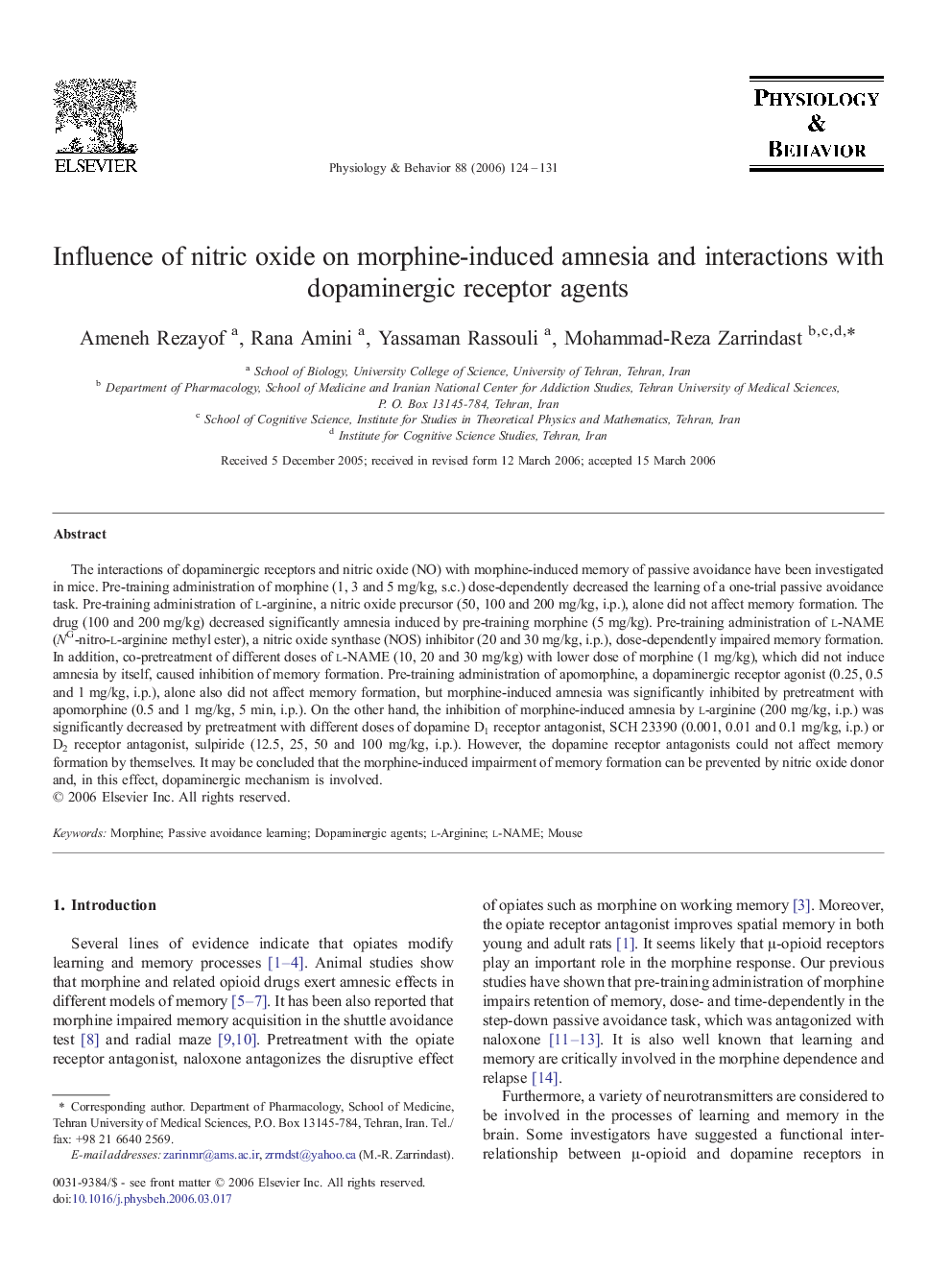| Article ID | Journal | Published Year | Pages | File Type |
|---|---|---|---|---|
| 2846401 | Physiology & Behavior | 2006 | 8 Pages |
The interactions of dopaminergic receptors and nitric oxide (NO) with morphine-induced memory of passive avoidance have been investigated in mice. Pre-training administration of morphine (1, 3 and 5 mg/kg, s.c.) dose-dependently decreased the learning of a one-trial passive avoidance task. Pre-training administration of l-arginine, a nitric oxide precursor (50, 100 and 200 mg/kg, i.p.), alone did not affect memory formation. The drug (100 and 200 mg/kg) decreased significantly amnesia induced by pre-training morphine (5 mg/kg). Pre-training administration of l-NAME (NG-nitro-l-arginine methyl ester), a nitric oxide synthase (NOS) inhibitor (20 and 30 mg/kg, i.p.), dose-dependently impaired memory formation. In addition, co-pretreatment of different doses of l-NAME (10, 20 and 30 mg/kg) with lower dose of morphine (1 mg/kg), which did not induce amnesia by itself, caused inhibition of memory formation. Pre-training administration of apomorphine, a dopaminergic receptor agonist (0.25, 0.5 and 1 mg/kg, i.p.), alone also did not affect memory formation, but morphine-induced amnesia was significantly inhibited by pretreatment with apomorphine (0.5 and 1 mg/kg, 5 min, i.p.). On the other hand, the inhibition of morphine-induced amnesia by l-arginine (200 mg/kg, i.p.) was significantly decreased by pretreatment with different doses of dopamine D1 receptor antagonist, SCH 23390 (0.001, 0.01 and 0.1 mg/kg, i.p.) or D2 receptor antagonist, sulpiride (12.5, 25, 50 and 100 mg/kg, i.p.). However, the dopamine receptor antagonists could not affect memory formation by themselves. It may be concluded that the morphine-induced impairment of memory formation can be prevented by nitric oxide donor and, in this effect, dopaminergic mechanism is involved.
